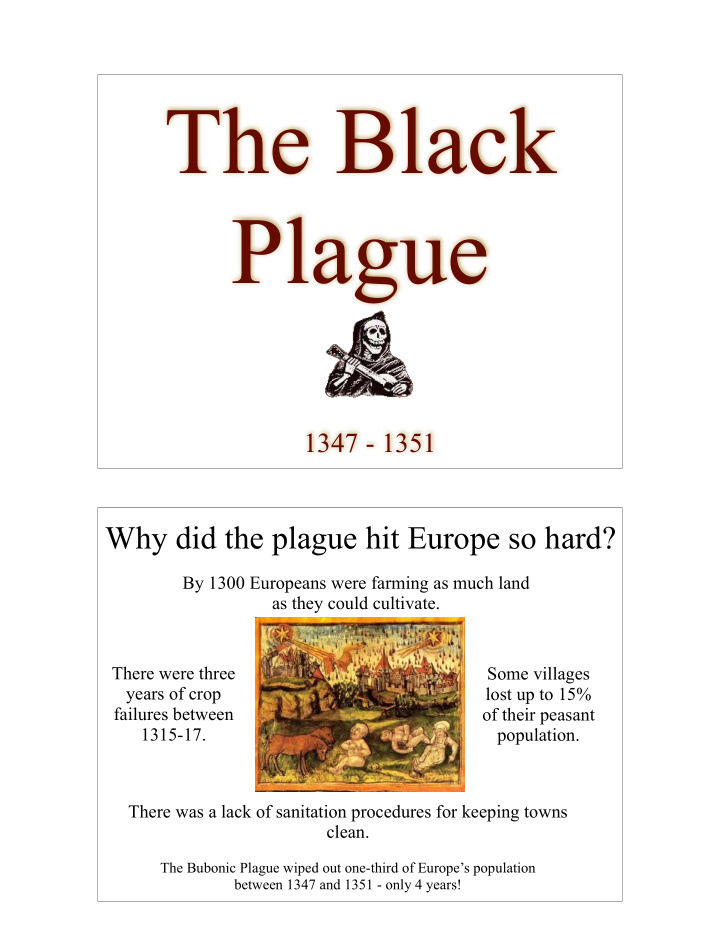



The Black Plague 1347 - 1351 Why did the plague hit Europe so hard? By 1300 Europeans were farming as much land as they could cultivate. There were three Some villages years of crop lost up to 15% failures between of their peasant 1315-17. population. There was a lack of sanitation procedures for keeping towns clean. � The Bubonic Plague wiped out one-third of Europe’s population between 1347 and 1351 - only 4 years!
3 Forms of the Plague Bubonic Plague painful lymph node swellings, buboes Septicemic Plague attacked the blood system Pneumonic Plague attacked the respiratory system Causes of the Plague Myths Foreigners or those of a different religion had poisoned the wells It was a punishment from God. Bad air The position of the planets
The Bubonic Plague Swellings “egg” or “apple” � Fever of 101-105 degrees � Headaches and Aching joints � Vomiting � Malaise People with swellings might have a chance. � Mortality rate: 30-40% � Whole process: 3-5 days The Pneumonic Plague 2nd most common form of the plague � sputum infected the lungs � Bacteria in saliva coughed or sneezed up by sick persons 1-7 days for symptoms to appear � Mortality Rate: 90-95%
The Septicemic Plague DIC: disseminated intravascular coagulation (bleeding under the skin) caused the Attacked the skin to turn blood system dark purple, almost black Victims usually died the same day symptoms appeared. � Mortality Rate: close to 100% Transmission of the Bubonic and Septicemic Plague Direct contact with a flea The Bacteria (Yersinia pestis) carried by rodents Fleas bite the rodent and move to human hosts Xenopsylla cheopis
The Disease Cycle Flea drinks rat blood that carries the Bacteria multiply. bacteria. Human is infected Flea’s gut clogged Flea bites human. with bacteria. Attempts to Stop the Plague Flagellanti: self-inflicted “Leeching” “penance” for sins A Doctor’s Robe Pograms against Jews “Golden Circle” obligatory badge
Buboes ¡– ¡swollen ¡lumps ¡in ¡the ¡ groin, ¡ Neck, ¡or ¡armpit 9
Recommend
More recommend